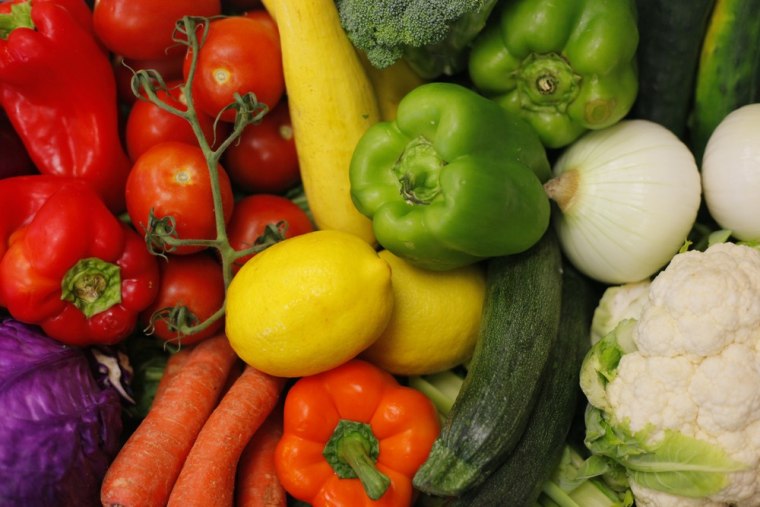A diet filled with colorful fruits and vegetables is key to your health. But there's a lot of confusion about pesticides in our produce, with some advocacy groups saying we should be worried.
Is organic the way to go with fruits and vegetables? What about locally grown? Are pesticide residues, occurring on many conventionally grown fruits and vegetables, a health risk?
The good news is that federal regulators DO worry about all of these issues, and continue to both regulate and monitor pesticide residues in food. This a job shared by the Environmental Protection Agency (EPA), along with the FDA (Food and Drug Administration), and USDA (United States Department of Agriculture). The USDA Pesticide’s Data Program has been in existence for at least 20 years — created and designed to continually monitor pesticide residues on food to ensure they are safe to eat by any age group, especially children for long periods of time.

Why use pesticides at all?
They protect plants from the damaging effects of weeds, plant diseases and insects. There is no question these can be toxic, but that is why the EPA (with help from the USDA and FDA) have tight regulation on both type of pesticide and amount of pesticide used.
Regulated pesticide use can help keep food costs down. Less produce is lost from insects, bug, weeds, and plant diseases. Some GMO seeds (including soy and corn) have been developed to help reduce the need for pesticide treatment, by producing plants more resistant to disease and vermin.
The USDA Pesticide’s Data Program has been in existence for at least 20 years – created and designed to continually monitor pesticide residues on food to ensure they are safe to eat by any age group (body weight related for kids), especially children for long periods of time.
“Residue” amount alone is not an index of safety — and to assess risk, the EPA looks at what potential harm the compound has, if any. There are safety recommendations (and policies) that take into account short and long term exposure, cumulative risk from all other pesticides. Animal data are used to look at potential biological impact on health.
And toxicologists around the world agree that regular (conventional) produce is safe to eat. The mere presence of a pesticide residue does not mean they pose a health risk. And the presence of residues is measured in parts per million or parts per billion.
Wash it the right way
Thorough washing with water has been shown to remove most of any possible remaining residue (residues can also be absorbed through the roots of a plant or tree and cannot be washed off). Here's the proper way:
- Don't do just a quick swipe under the faucet.
- Rinsing thoroughly means under running water and/or soaking in a clean basin or pot — not the sink which is full of bacteria.
- Final rinse under your running faucet.
Peeling your thin-skinned fruits and vegetables can remove nearly all existing residues. While a minor loss of nutrients can occur with peeling, it can provide additional peace of mind if needed.
Use this peeling guide:
Thick skins: removed, inedible.
- Fruit: avocados, mangoes, papaya, kiwi, cantaloupe, oranges, grapefruit, pineapple
- Vegetables: onions, corn
Thin skins: can be peeled — or not —remain edible
- Fruit: apples, nectarines, peaches, pears
- Vegetables: cucumbers, eggplant, sweet bell peppers, white and sweet potatoes
Ultra-thin skins: not peeled— entire fruit/veggie eaten with skins
- Fruit: grapes, blueberries
- Veggies: cherry tomatoes, snap peas, hot peppers
No skins
- Fruit: strawberries
- Veggies: cabbage, celery, spinach, cauliflower, kale
Avoiding pesticide residues altogether can be done by buying certified organic produce. By FDA law, no pesticides can be used in the growing of these fruits and vegetables. But with organic, thorough washing is a must-do to avoid bacterial or other contaminants that might be consumed.
Organic does not translate to “safe to eat without washing”. Don't assume that produce at a local farm stand is always organic. Ask for details at the farm stand, or from “farm fresh” sections at the grocery store.